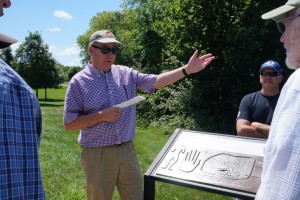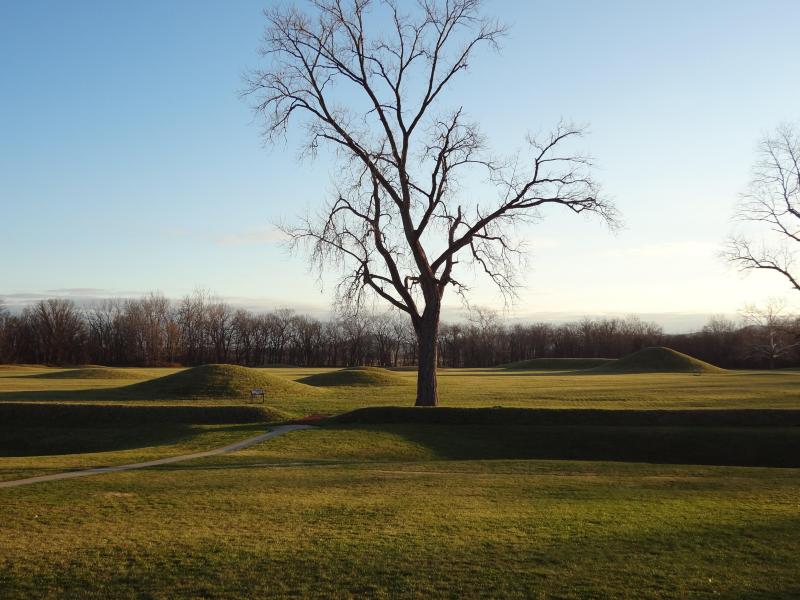UPDATE: This archaeological preserve is now part of Hopewell Culture National Historical Park near Chillicothe, Ohio.
——————————————————————————————————————————
The Archaeological Conservancy acquired the main portion of the famous Hopewell Mounds Group near Chillicothe, Ohio in summer 1980. 120 acres of the site were acquired, including the major mounds and earthworks.
Acquisition was made possible in part by a $50,000 grant from the George Gund Foundation of Cleveland and a matching grant from the Ohio State Historic Preservation Office. The Conservancy launched a major fundraising drive to raise the remaining funds needed.
Land owners, Richard P. Johnson, Jr. and his mother, Marjorie Johnson were determined to see this irreplaceable part of American history preserved so they worked with the Conservancy to make permanent preservation a reality. In recognition of the Johnson family’s determination to see the Hopewell Mounds preserved, this portion of the site was dedicated by the Conservancy to the late Richard P. Johnson, Sr.

Retired President/CEO Mark Michel recounts the saga of The Hopewell site’s preservation in front on an NPS interpretive sign at the site. Photo Bliss Bruen/The Archaeological Conservancy.
The Hopewell Mounds Group was the central ceremonial center of the Hopewellian civilization which flourished in the eastern United States from about 300 B.C. to A.D. 500. The large burial mounds and earthworks are characteristic of the Hopewellian cultural tradition. Elaborate grave goods are normally associated with the mounds, including exotic materials such as obsidian from a deposit in Yellowstone National Park.
One of the largest construction projects in North America prior to the 19th century, the Hopewell Mounds Group required more than 3 million cubic yards of earth to construct the mounds and embankments. The material used to build these features was moved by entirely by hand. The outside embankments at Hopewell are more than three miles in length. Mound 25 is the largest burial mound in North America.
While the Hopewellian civilization has been intensively studied for 150 years, much more remains unknown than known. In preserving these sites in situ, the Conservancy has ensured that the information that may someday unlock the mysteries of 2,000 years ago will always be available. As new and better techniques develop more information could be recovered.
The Conservancy took title to this property with more to do on the project. It required an additional $125,000 in funding to complete the acquisition and stabilize the site.




